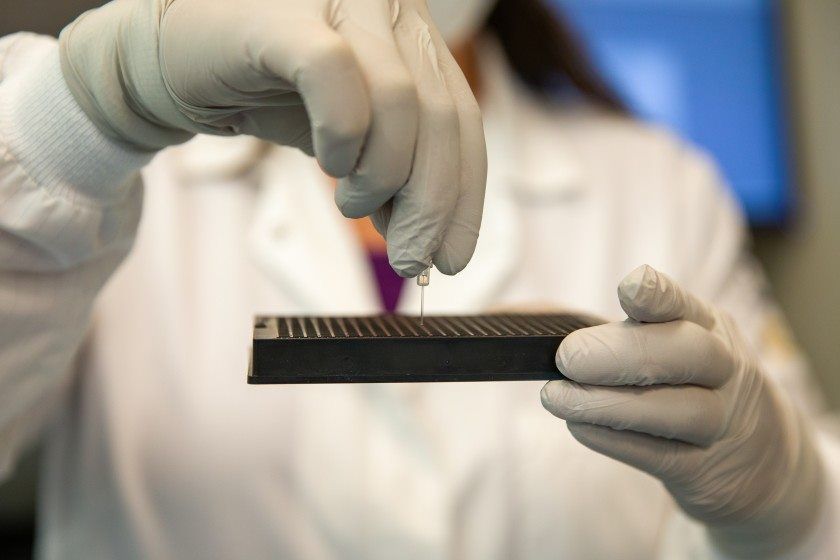UC Santa Cruz researchers develop faster method for COVID-19 antibody testing

SANTA CRUZ, Calif. (KION) Researchers at UC Santa Cruz said they have developed a faster way to test for antibodies to SARS-Co-V-2, the virus that causes COVID-19.
It is a type of serological test, but instead of taking 4 to 6 hours, the university said the test provides results in less than 20 minutes. They also say that even though they have cut the time it takes to get a result, it is as accurate as the most reliable antibody tests that are currently available.
Normally, researchers say testing is done using a laboratory method called ELISA that takes several hours to run and provides results showing the strength of the immune response, and other types that use test strips are faster, but not as reliable and do not quantify the antibody levels.
The new method developed at UCSC is called the biolayer interferometry immunosorbent assay (BLI-ISA).
“Our assay is as sensitive if not better than other assays in detecting low levels of antibodies, and the specificity [false-positive rate] is as good as the best antibody tests out there,” said Rebecca DuBois, an associate professor of biomolecular engineering. “It combines the advantages of the test strips that take 20 minutes with the quantitative results and higher performance of ELISA.”
The tests do not show if a person currently has COVID-19, but they are used to determine if somebody has already had it. Researchers say that information is important for understanding the spread of the virus because it helps to find out how many people in a population have had it.
The information gained by testing could also be important if scientists are eventually able to find out whether a certain level of antibodies is needed to protect against COVID-19 infection.
“That is still to be determined, but we do know that people who have been infected with SARS-CoV-2 have very diverse levels of antibodies, and it would not be surprising to find that below some baseline level they might not be protective,” DuBois said. “So it’s really useful to have that quantitative ability to know what someone’s antibody status is, whether it’s from a past infection or a vaccination.”
The test is done using an automated "dip-and-read" format, according to the university. A biosensor tip is dipped into a solution containing a viral protein that is recognized by the antibody. When the protein binds to the tip, it creates a signal that is used to make sure there is consistency in the loading step. After that, it is dipped into a wash solution before being dipped into a blood plasma sample. The person conducting the test can do a finger prick to get the amount of blood needed. It gives a signal when antibodies bind to the viral proteins, called antigens.
In the next step, a type of antibody called an IgG is detected and quantified by measuring the binding of the anti-IgG antibodies.
The BLI-ISA method could not be used at a doctor's office or pharmacy because it requires laboratory equipment, but researchers say it is faster and less labor intensive.